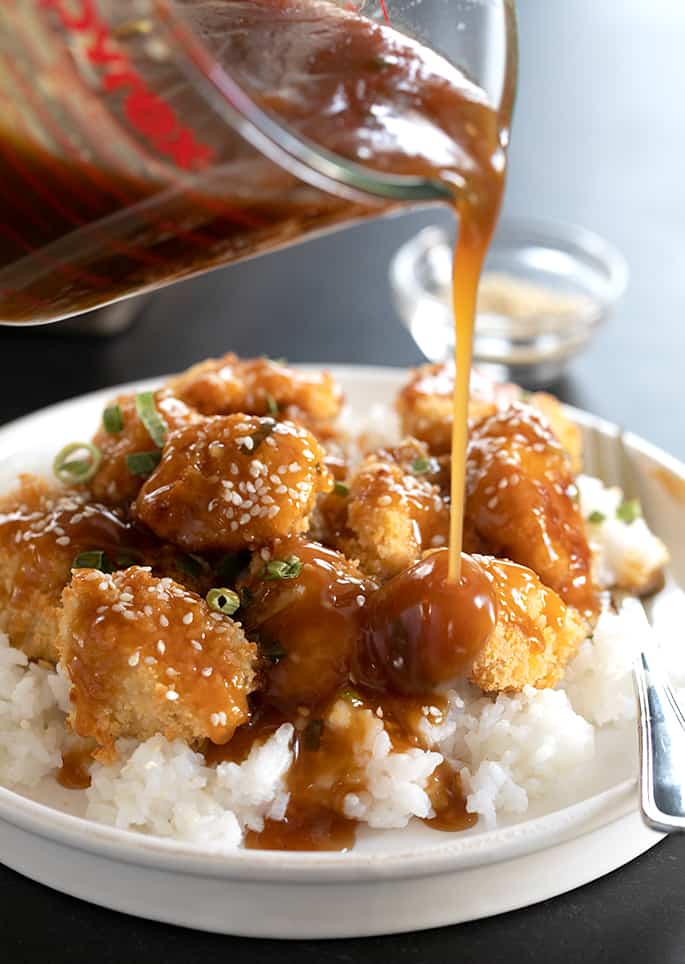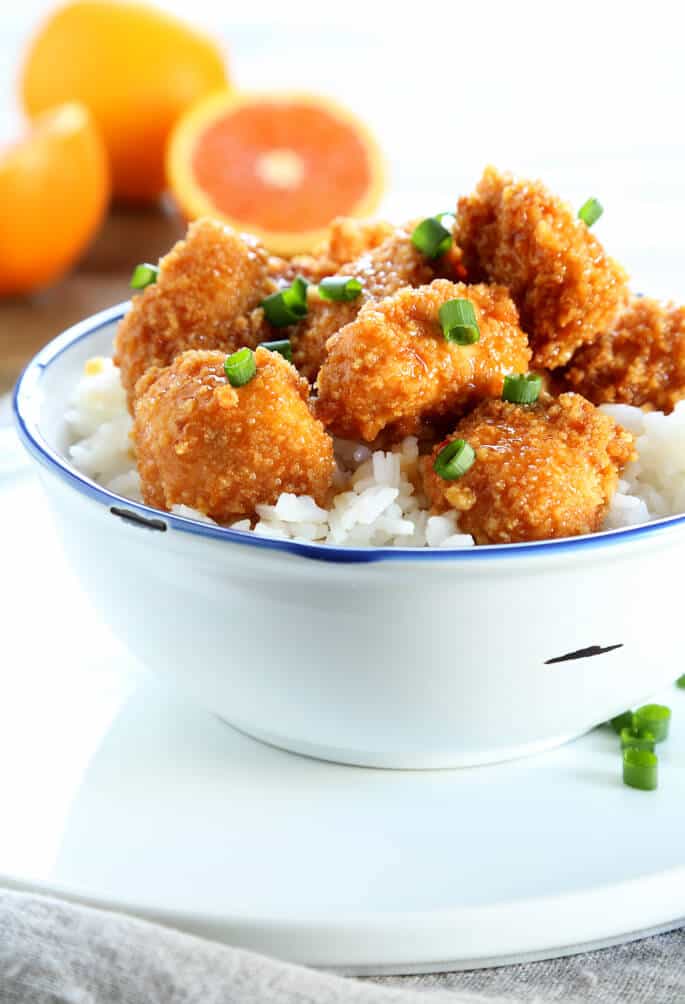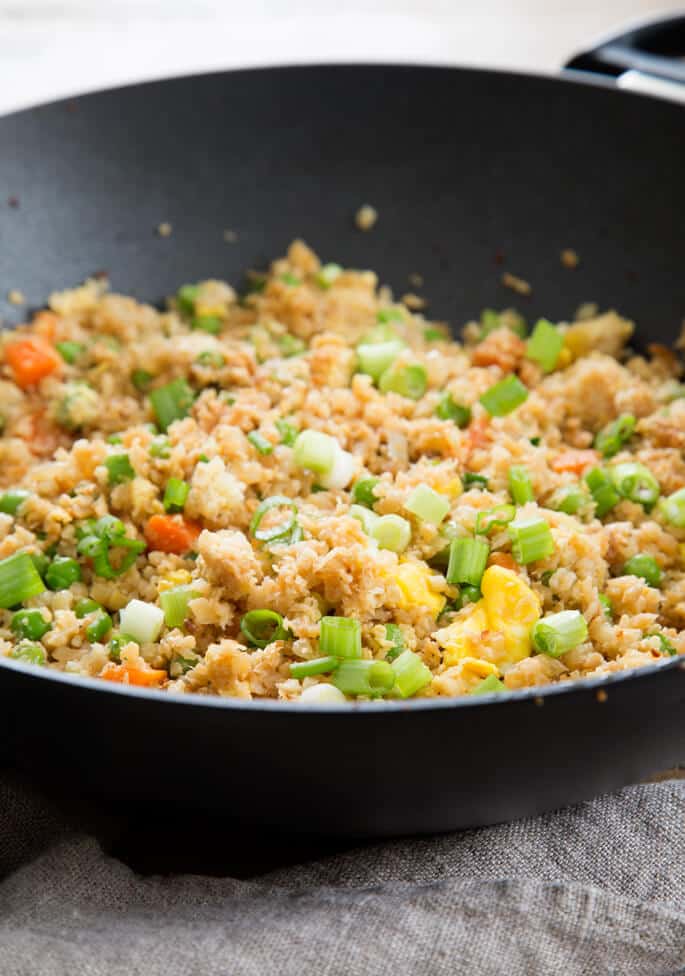These gluten free Chinese food recipes (I know that if you’re not from the U.S., maybe some of this food seems crazy, but this is pretty standard American Chinese restaurant fare) bring it all back—better than ever!
What Chinese food is gluten free?
Many recipes for Chinese food, at least those made in the American take-out style, seem like they should be safe to eat on a gluten free diet. Think about it: Many Chinese recipes involve lots of veggies and meats, both of which do not contain gluten.
Unfortunately, many also make use of breading, especially on chicken, and the dough used to wrap your favorite dishes like dumplings and won tons are wheat-based. You can’t even grab regular soy sauce as it also contains wheat.
We’re lucky enough to have a Chinese restaurant about 20 minutes from where we live that offers reliably gf dishes. But the options that are on the gluten free menu are more limited, and everything is super expensive.
This restaurant, like most Chinese restaurants that offer gluten free food, is able to offer us rice-based options, sauces being made with cornstarch, and dishes with rice noodles. But anything breaded and fried is off-limits.
And, of course, there’s no gluten free won ton soup. And no gluten free egg rolls offered. But that’s okay!
Even if we eat gluten free, we can make everything ourselves at home. Here’s how.
The best gluten free Chinese food recipes
As I developed these gluten free Chinese food dishes, I worked hard to create the authentic taste that we all know and love. And I’m happy to say, I exceeded my wildest expectations on many of these recipes. If you’re ready for gf Chinese food, dig in!

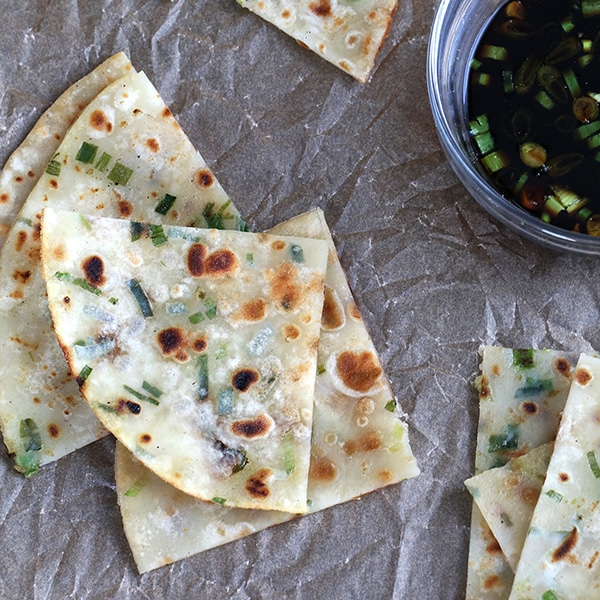
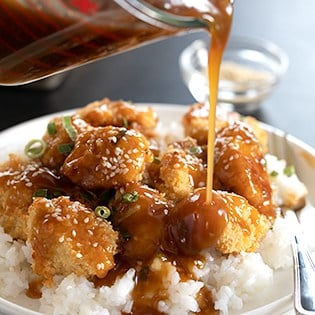
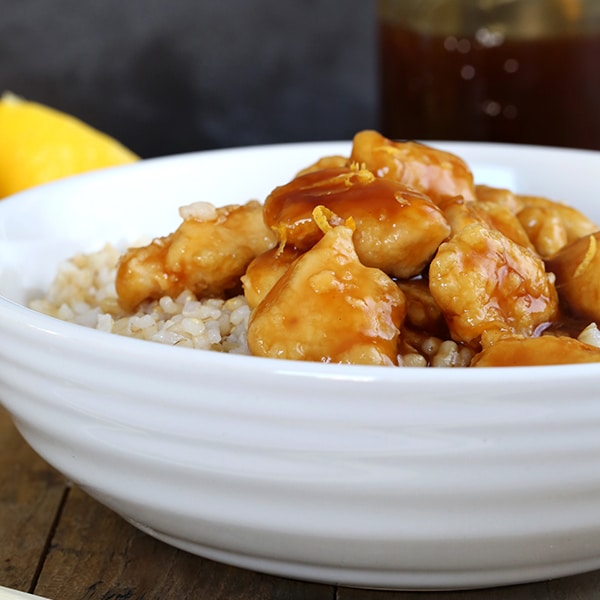


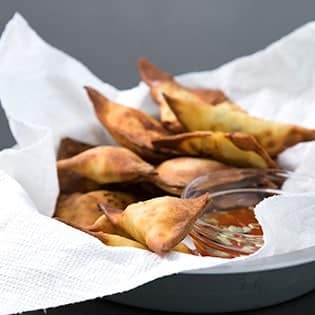



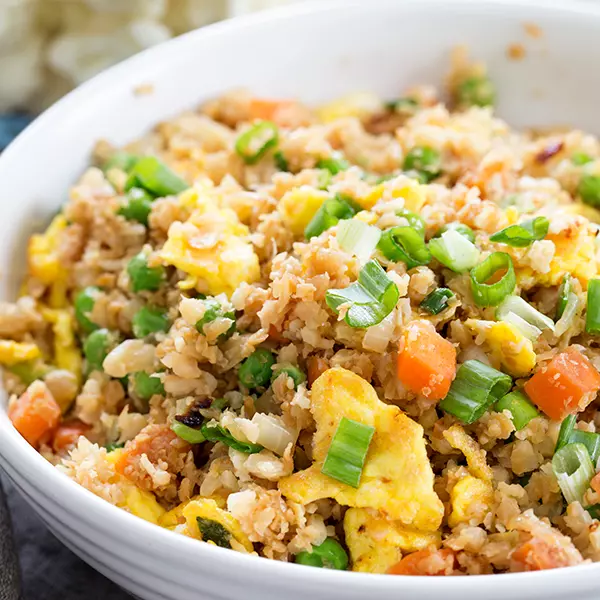


Tips for making the best gluten free Chinese
Preparing American-style Chinese dishes isn’t nearly as foreign an experience as you might think. Yes, you may use some ingredients that you’d never use but to make Chinese food, but a lot of the techniques will be familiar to those who cook on a regular basis.
All the same, I do have a few tips to help you make the best gluten free Asian dishes.
Always check your product labels
You already know this by now, but gluten can be hiding anywhere. While I don’t rely on many bottled sauces or spices for my gluten free Chinese food recipes, there are some Asian food essentials you just can’t go without.
Soy sauce and hoisin sauce are two big ones, and you can’t just buy them off the shelf without checking the label, because traditional varieties will definitely contain gluten. Instead, you’ll want to look for their gf counterparts, or in the case of soy sauce, an alternative like tamari or coconut aminos. I’ve linked some of my favorite gluten free brands below, but product labels are pretty explicit these days.
Use the freshest ingredients possible
One thing that really sets apart Chinese cuisine from other styles of cooking is the use of fresh ingredients. You know that many Chinese food options contain fresh meats and veggies, but don’t underestimate the power of fresh spices.
While you can get away with using things like powdered ginger and garlic, I implore you to try the fresh stuff at least once so you can see what kind of difference it makes.
Prep your ingredients ahead of time
Many gluten free Chinese recipes are rather quick to prepare. But you can get dinner on the table more quickly and with less hassle if you spend a few minutes prepping before you start cooking.
Rather than chop veggies and slice meat as you need it, take care of these tasks first. Keep your veggies separated as some may take longer to cook than others, and when a recipe calls for it, be sure to marinate your meat.
Give your meats time to marinate
Chinese food is special because every bite you take is full of flavor. Using high quality ingredients is part of the equation, but another major factor is infusing flavor into the meats that you use for stir fries and other dishes.
If you’re in a rush, I can see how you’d be tempted to skip marinating, or maybe just give the meat a few minutes. Believe me, when you allow beef, chicken, or pork time to absorb sauces, your meal will be elevated to the next level.
FAQ
Is Chinese food gluten free?
If you’re considering gluten free Chinese takeout, you’ll be disappointed to learn that your local restaurant probably can’t accommodate you. This is because while there are plenty of gf ingredients in Chinese cuisine, you’re likely to see cross contamination due to the breading and dough on fried options, not to mention that not many restaurants will have a dedicated fryer.
If you’re cooking Asian gluten free recipes at home, though, you have the freedom to make all your favorite Chinese dishes, without the worry of contamination.
Here’s a quick gluten free Chinese food list that you can use when cooking at home or exploring local restaurants:
- Meats – All the different varieties of meat that you’ll find in Chinese food options are naturally gluten free, including beef, chicken, fish, pork, and shrimp.
- Vegetables – Whether they’re fresh or frozen, nearly every vegetable is also naturally gluten free. However, be careful if you’re reaching for bags of frozen veggies. You’ll want to read their product labels carefully to be sure that they haven’t been packed with gluten containing binders or spices.
- Rice – Plain white rice is gluten free, as are items made from rice. You can find rice noodles and wraps that make a perfect alternative to those made from wheat.
- Tofu – So long as it’s plain tofu, you can rest assured that it’s free of gluten. Those that have been been marinated or otherwise seasoned, however, could contain gluten.
Are there any gluten free Chinese sauces?
The most popular gf Chinese sauces are gf hoisin (I like Wok Mei brand gluten free hoisin sauce; that’s an affiliate link) and gluten free soy sauce. In lieu of the latter, you can also use tamari or coconut aminos — they offer a similar taste with not a single trace of gluten.
“White sauces”, or those made using cornstarch, can also be gluten free. If you’re eating out, you’ll need to ask your specific restaurant about how it prepares its cornstarch-based sauces to be sure that gluten doesn’t sneak in.
Most darker sauces, including duck sauce, fish sauce, oyster sauce, and teriyaki sauce, are sure to include wheat, usually due to the inclusion of traditional soy sauce. Thankfully, you can find gluten free variations of most. I like this Panda Brand gluten free oyster sauce (affiliate link) and this Thai Kitchen gluten free fish sauce (affiliate link). I buy San-J Tamari Soy Sauce (affiliate link) in half-gallon containers, too, since we go through so much of it!
There are also plenty of ingredients you can use to make your own sauces that are free of gluten. Apple cider vinegar, ginger, honey, red pepper flakes, and sesame oil are a few examples.
What are the best gluten free flours for gf Chinese food?
Cornstarch, rice flour, and tapioca starch are the most common gf flours you’ll find in Chinese gluten free recipes.
Some of these flours are already common in traditional Chinese fare (for example, cornstarch is the base for many white sauces), but I promise that switching out wheat flour for one of these ingredients as a breading or sauce thickener won’t make any difference when it comes to taste or texture.
Do I need a wok to make gluten free Chinese food recipes?
Long ago, I would have said that you absolutely do not need a wok to prepare gluten free Chinese dishes. Today? I would say that you should definitely consider investing in a wok.
To be honest, no, the truth still is that you don’t need a wok to make gluten free stir fry or orange chicken. But, I think you’ll enjoy a more authentic taste (plus cut down on cook time and oil usage) if you use one.
If you don’t have a wok and aren’t in the market for one right now, just stick with a skillet.
The post My Best Gluten Free Chinese Food Recipes | Say Goodbye to Takeout appeared first on Gluten Free on a Shoestring.



